Are you curious about shedding extra pounds or nourishing your body with cleaner, heart-healthy foods? If so, you have probably discovered the idea of low-fat vegan meals. Nevertheless, you might feel unsure about where to begin.
In fact, this plant-based, reduced-fat diet can deliver many health benefits, ranging from better cholesterol management to a smaller environmental footprint.In this article, we will explain all you need to know about eating low-fat. Moreover, we highlight oil-free cooking techniques while revealing how to enjoy plant-based recipes without losing excitement.
Furthermore, we share helpful insights for meal planning and point out common mistakes. Meanwhile, we offer fun ways to keep your journey stress-free and delicious. Let’s jump in!
Understanding Low-Fat Vegan Meals
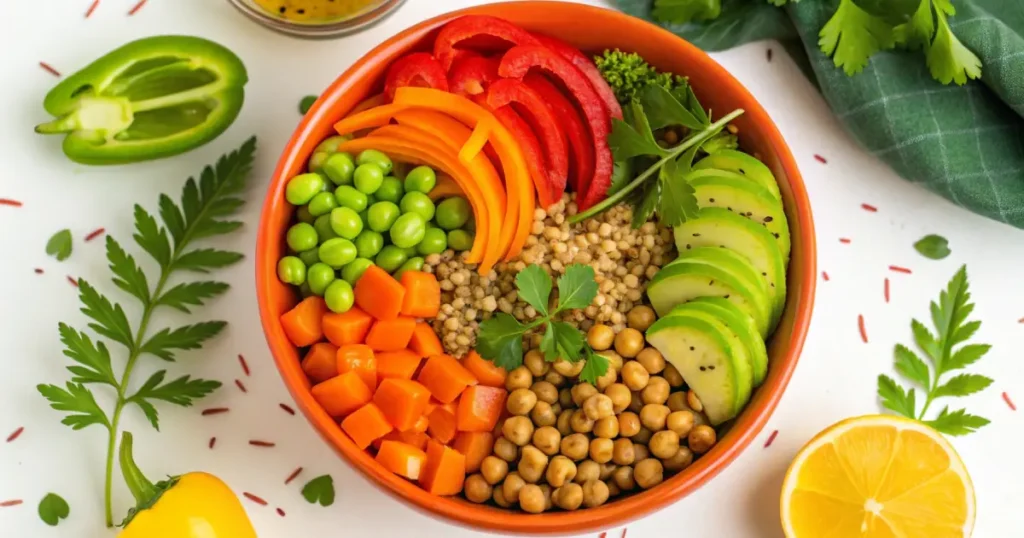
What Are Low-Fat Vegan Meals?
First, low-fat vegan meals focus on cutting back on oils and high-fat ingredients. Furthermore, they highlight fresh produce, whole grains, legumes, beans, and other nutrient-rich foods. This approach, however, stems from avoiding heavily processed or animal-based products.
Instead, it relies on fruits, vegetables, and non-starchy veggies that help you keep a balanced macros ratio. By limiting fatty plant-based items—such as coconut milk or large amounts of nuts—you’ll create lighter but still satisfying meals.
Why Focus on Low Fat for Plant-Based Diets?
Indeed, opting for a low-fat diet can help control your calorie intake while ensuring you still get vital nutrients. Moreover, many whole food plant-based (WFPB) enthusiasts believe this reduced-fat method supports better cholesterol management, steady weight loss, and higher energy levels.
Read also:
Marry Me Chickpeas: Ultimate Plant-Based Protein Dish
Since legumes and produce contain minimal fat, they’re perfect for fuss-free cooking. Thus, you can quickly whip up soups, stews, and hearty salads. Additionally, with the fiber and vitamins they provide, low-fat vegan meals fit seamlessly into a busy schedule. Finally, you’ll stay healthy and energized while enjoying flavorsome, plant-powered creations.
Key Nutrients in a Low Fat Vegan Diet
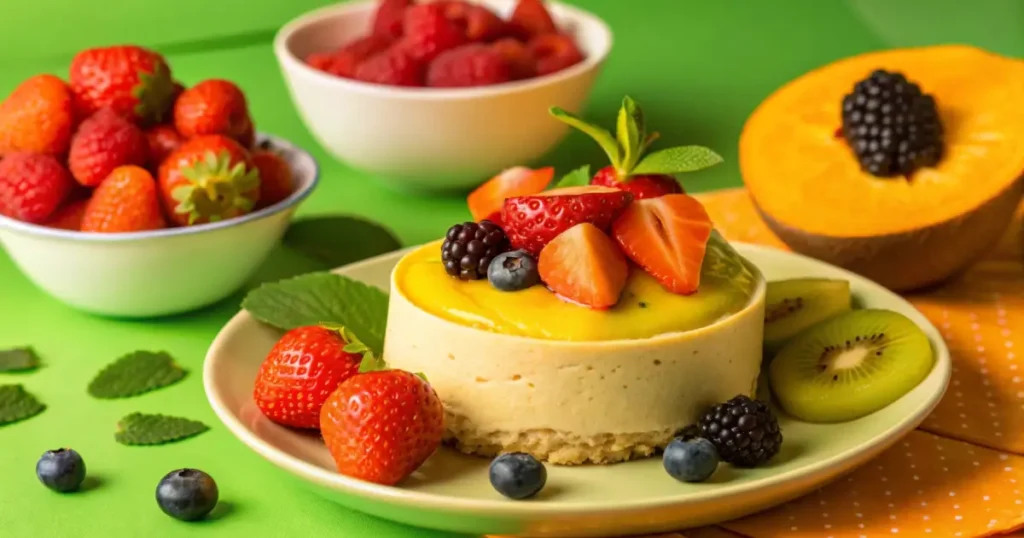
Macronutrients in Low Fat Vegan Meals
When planning low fat vegan meals, it’s crucial to see how protein, carbs, and fats work together. Legumes and beans are smart yet lean protein sources that support muscle health. Whole grains and non-starchy vegetables provide slow-digesting carbs for steady energy. Moreover, these nutrient-dense ingredients help you maintain balanced macros without relying on unnecessary fats or oils.
In fact, you can easily adopt oil-free cooking methods—like sautéing with vegetable broth—to keep total fat levels low. Consequently, you’ll get plenty of heart-healthy foods that nourish your body yet keep extra calories at bay. Besides, opting for fibre-rich produce leads to better digestion. It also keeps you feeling full, which helps you stick to a reduced-fat diet more effortlessly.
Essential Vitamins and Minerals
Even though plant-based recipes pack in vitamins and minerals, you should still watch vitamin B12, iron, and calcium. For instance, fortified nutritional yeast can bolster your vitamin B12 intake. Meanwhile, leafy greens like kale or collard greens give you calcium and iron.
Additionally, choosing beans and lentils supplies an iron boost, which is vital for energy. Furthermore, including a wide variety of fruits ensures you never run short on vitamin C. All in all, these intentional choices help you benefit from low fat vegan meals. They also prevent compromising your body’s need for a full spectrum of nutrients.
Health Benefits of Low Fat Plant-Based Eating
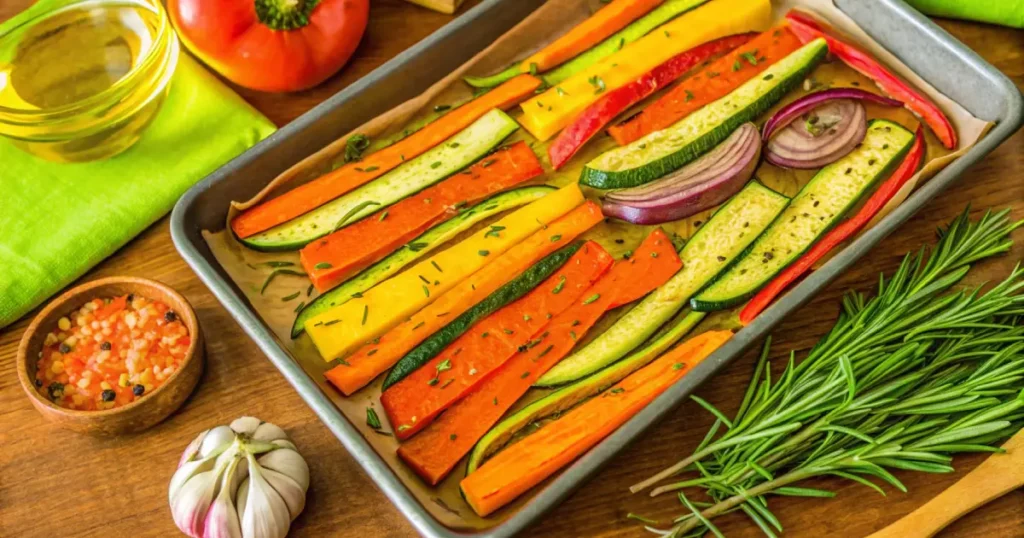
Improved Heart Health and Cholesterol Levels
Choosing low fat vegan meals can have a positive effect on your cardiovascular system. Since many whole food plant-based (WFPB) options contain soluble fiber and minimal saturated fat, they promote better cholesterol management.
Additionally, replacing processed items with fresh produce often cuts down on sodium, which may help regulate blood pressure. On top of that, focusing on veggies like broccoli, spinach, and peppers supplies antioxidants that protect against oxidative stress.
Consequently, hearts remain happier and healthier in the long run. In other words, by eating more fruits, legumes, and whole grains, you’re showing your heart some serious love.
Read also:
Marry Me Chickpeas: Cozy Dish for Food Lovers
Weight Management and Enhanced Energy
By sticking to a reduced-fat diet, you naturally cut back on excess calories, which can contribute to healthy weight management.
Moreover, many people who follow low fat vegan meals report feeling lighter and more energetic throughout the day. Because plant-based foods tend to be dense in nutrients yet light in fat, you can enjoy satisfying meals without the post-meal lethargy.
Furthermore, the high fiber content helps with portion control, as you’ll feel full faster and stay satisfied longer. As a result, you may avoid mindless snacking or overeating. In essence, this style of eating supports an active lifestyle while helping you maintain a healthy weight.
Essential Ingredients for Low Fat Vegan Cooking
Staple Foods and Pantry Must-Haves
Stocking your pantry with the right staples helps you whip up low fat vegan meals without breaking a sweat. First, gather a variety of whole grains—like brown rice, quinoa, and oats—to provide a steady source of complex carbs.
Then, pick legumes and beans such as lentils, black beans, and chickpeas, since they’re lean protein sources and pack plenty of filling fiber. Moreover, add non-starchy vegetables—think broccoli, spinach, and zucchini—to bring color and nutrients to your dishes.
Additionally, keep some fresh fruits on hand to satisfy your sweet tooth without resorting to refined sugars. In place of oil, experiment with oil-free cooking methods like baking, steaming, or broth sautéing.
Natural Flavor Boosters (Herbs, Spices, and Sauces)
Relying on fresh herbs, spices, and homemade sauces prevents blandness when cutting down on fats. Spices like cumin, turmeric, and smoked paprika create depth in soups, stews, or chili. Equally important, seasoning with fresh herbs like basil or parsley adds brightness without piling on calories.
Lastly, try whipping up a quick, nutrient-dense sauce from tahini, lemon juice, and garlic for a tangy topping. These flavorful extras let you savor restaurant-quality meals at home—even when following a reduced-fat approach.
Easy and Delicious Low Fat Vegan Recipes
Quick Breakfast Ideas for Low Fat Vegan Meals
Jumpstart your day with a bowl of oil-free oatmeal topped with fresh berries and a sprinkle of cinnamon. This light option provides fiber and releases energy slowly, helping you stay full longer. Another simple idea is a tofu scramble loaded with non-starchy vegetables, which delivers generous protein without excessive fat. In both cases, you’ll enjoy heart-healthy foods that taste great and keep you moving.
Simple Lunch and Dinner Options
For midday meals, try a veggie wrap filled with zucchini, bell peppers, and a dollop of hummus. This satisfying yet nutrient-dense dish can be made the night before for convenience. If you’re craving a heartier dinner, cook up a whole grain pasta dish using smashed tomatoes, garlic, and fresh herbs as a light sauce. As an alternative, prepare a robust lentil soup brimming with carrots, celery, and onions for a warm, comforting meal. Thanks to their reduced-fat focus, these recipes keep your calorie count in check while still delivering flavor.
Read also:
Small Chocolate Cake Recipe Moist, and Perfect for Occasion
Guilt-Free Dessert and Snack Ideas
Craving something sweet? Opt for baked apples dusted with cinnamon or a fruit salad drizzled with fresh lime juice. You’ll still get a sweet treat, but without the added oils or processed sugars. Meanwhile, when snack time hits, reach for crunchy veggies paired with homemade salsa. That way, you’re snacking on fiber and vitamins instead of empty calories.For more delicious recipes, check out our recipe article.
Meal Planning and Prep Strategies for Low Fat Vegan Meals
Batch Cooking Tips for Reduced-Fat Dishes
Batch cooking saves time and helps you stick to your low fat vegan meals plan. First, choose recipes that freeze well—like lentil soups or chili—and cook large batches on weekends.
Then, divide the dishes into individual containers, ensuring they cool before freezing. Because these recipes often rely on oil-free cooking, you can boost flavor by seasoning with fresh herbs, spices, or vegetable broth.
Furthermore, prepping salad ingredients in advance—by washing and chopping veggies—can transform your lunch routine. As a result, you’ll always have nutrient-dense options ready to grab and go, which lessens the temptation to buy high-fat convenience foods.
Creating Balanced Weekly Meal Plans
Constructing a solid meal plan keeps your fridge stocked with heart-healthy foods while preventing diet boredom. Begin by mapping out breakfast, lunch, and dinner, focusing on whole grains, legumes and beans, and a variety of produce.
For instance, rotate tofu scrambles, avocado toast (in moderation), and oatmeal during the week to vary flavors. Meanwhile, schedule lighter dinners—like veggie stir-fries or hearty soups—alongside more filling meals like bean burritos or pasta with tomato sauce.
Finally, account for snacks that are both high in fiber and reduced-fat, such as fresh fruit or veggie sticks with hummus. By staying organized, you’ll find it simpler to maintain long-term success with low fat vegan meals.
Common Mistakes to Avoid on a Low Fat Vegan Diet
Over-Reliance on Refined Carbohydrates
While low fat vegan meals can be incredibly healthy, going overboard with refined carbs—like white bread, pasta, or sugary cereals—can undermine your efforts. Because these foods lack the fiber found in whole grains, they can lead to energy spikes and crashes.
Instead, opt for brown rice, quinoa, or oats to keep blood sugar levels stable and hunger at bay. Thankfully, these choices also pair well with vegetables, beans, and oil-free cooking sauces, creating filling combinations without excess fat.
All in all, prioritizing whole-food carbs is key for stability and sustained energy.
Neglecting Protein and Micronutrient Sources
Another pitfall involves overlooking vital sources of plant-based protein and nutrients. Proteins—found in lentils, chickpeas, and tofu—are essential for muscle growth and overall wellness.
Read also:
Marry Me Chickpeas Recipe: The Perfect Romantic Meal
Furthermore, crucial minerals like iron and calcium can slip through the cracks if not monitored closely. Hence, add greens such as kale or spinach to your meals, and consider fortified plant milks or nutritional yeast for extra vitamins. Moreover, don’t forget Vitamin B12,
which often requires a supplement or fortified foods in plant-based diets. By paying attention to micronutrients, you can enjoy low fat vegan meals without missing the key elements your body needs.
FAQs:
Is It Possible to Get Enough Protein on a Low Fat Vegan Diet?
Yes! Many people wonder if low fat vegan meals offer sufficient protein. Yet, legumes and beans—like lentils, black beans, and chickpeas—deliver ample protein. Additionally, tofu and tempeh work wonders. When you pair these foods with whole grains, you get a complete amino acid profile.
How Do I Keep My Meals Flavorful Without Added Fats?
To boost flavor, rely on fresh herbs, spices, and zesty sauces. For instance, a mix of garlic, onion, smoked paprika, and tomatoes enriches soups and stews. Moreover, adding lemon juice or cider vinegar brightens vegetables in an instant.
Are Low Fat Vegan Meals Suitable for Kids and Families?
Absolutely! Families can enjoy low fat vegan meals by including a variety of colors and textures. For instance, kids appreciate mild flavors like carrots, sweet potatoes, and peas. Additionally, whole grain pastas and rice bowls topped with beans and mild sauces keep picky eaters happy.
Can I Lose Weight Quickly on a Low Fat Vegan Diet?
A reduced-fat diet may encourage steady weight loss, but results vary. Most find that the high fiber and nutrient content of low fat vegan meals helps curb cravings, thus promoting mindful eating.
What Are the Best Snacks for a Low Fat Vegan Eating Plan?
Consider air-popped popcorn sprinkled with nutritional yeast or veggie sticks with salsa. Fresh fruit and smoothies also make refreshing, nutrient-dense snacks.
How to Dine Out While Sticking to Low Fat Vegan Options?
When eating out, choose restaurants that offer plenty of salads, vegetable sides, and bean-based dishes. Ask for sauces on the side, and look for steamed, baked, or grilled items instead of fried.
Conclusion: Embrace the Low Fat Vegan Lifestyle
The Long-Term Impact of Adopting Low Fat Vegan Meals
Choosing low fat vegan meals isn’t just about short-term victories.
Over time, a diet rich in heart-healthy foods and nutrient-dense ingredients strengthens your overall well-being.
By prioritizing whole grains, legumes and beans, and fresh fruits and vegetables, you’ll support improved cholesterol levels and balanced energy.
Practical Steps for Ongoing Success
To maintain this lifestyle, plan meals in advance, experiment with new recipes, and stay curious about flavors.
Additionally, embrace oil-free cooking techniques while keeping your pantry stocked with staple foods. Whenever you feel stuck, explore online communities or consult with a nutritionist for creative tips.
Finally, remember that consistency is key: small daily changes lead to big results. By nourishing your body with thoughtful, reduced-fat choices, you’ll sustain a healthy routine and enjoy flavorful dishes for years to come.


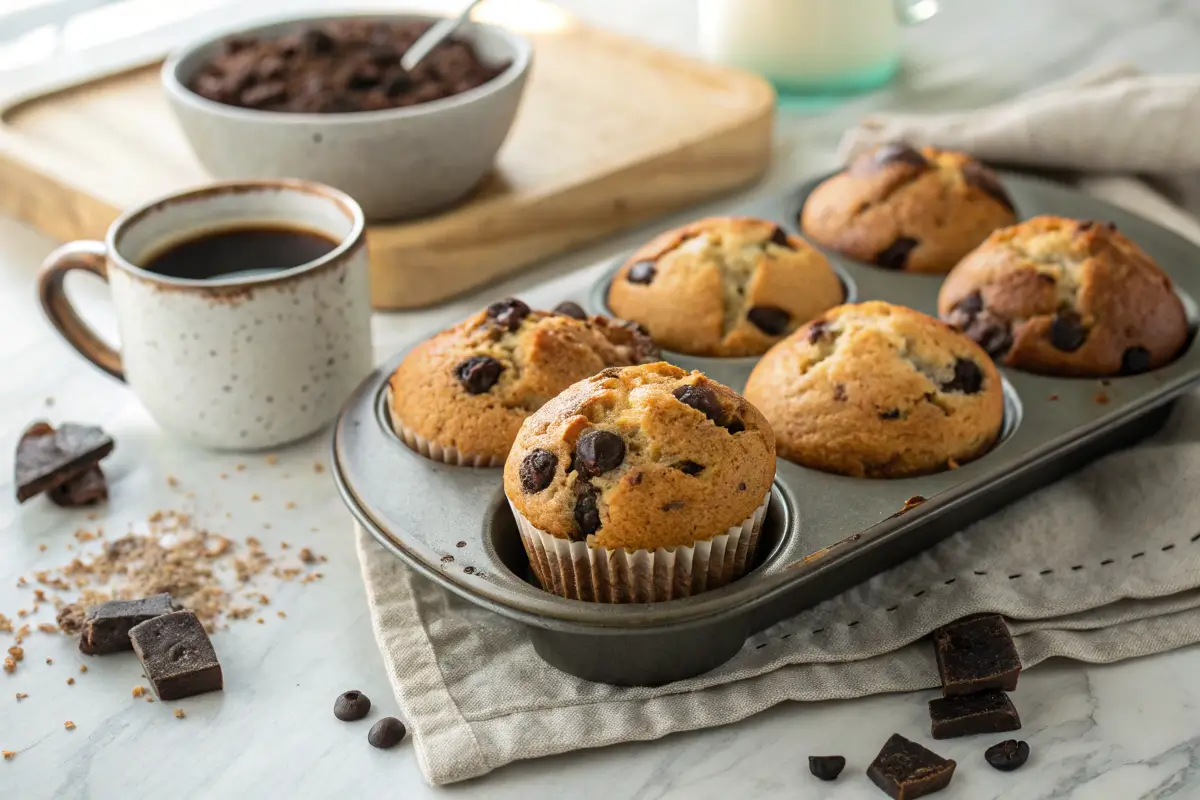
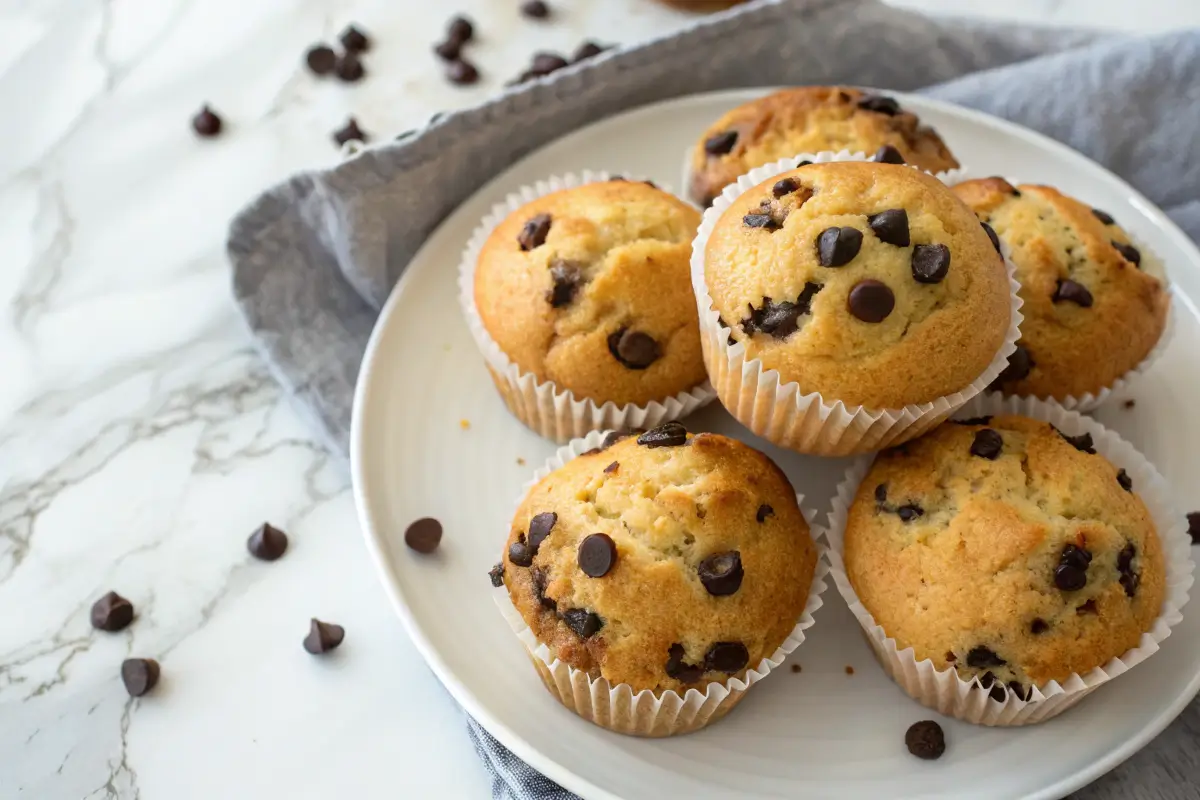



1 thought on “Low Fat Vegan Meals: The Ultimate Guide to Health & Taste”